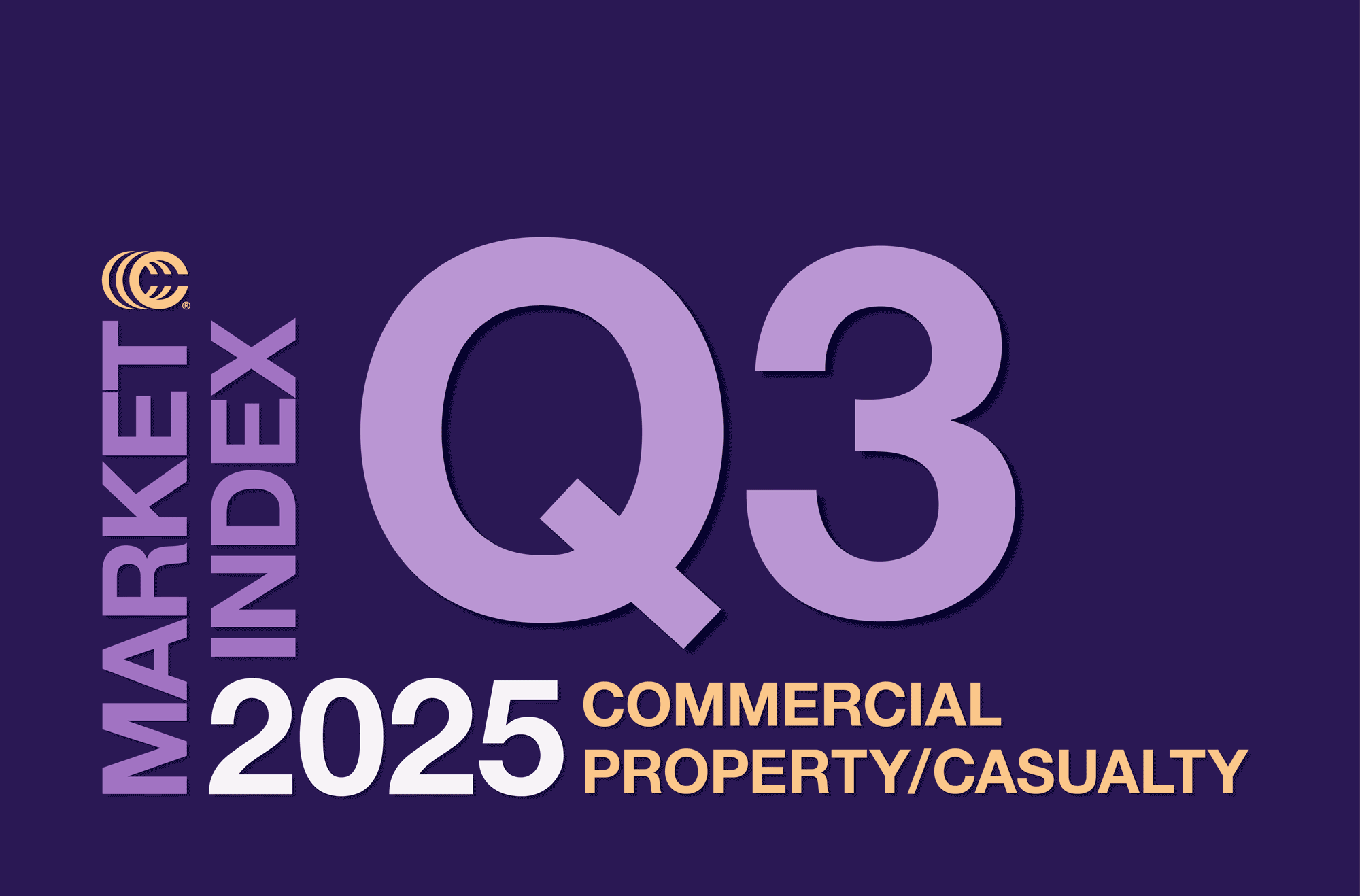
All Eyes on You

Every time the U.S. presidential administration passes from one party to another, employer liabilities transition with it.
The distinction with President Donald Trump’s return to the White House is the depth and speed of change, forcing business leaders to make complicated decisions affecting their organization’s risk profile, culture, and reputation.
As they try to balance direction from the federal government and post-COVID-19 workplace cultures, companies are increasingly concerned about their exposure to employment practices liability (EPL) claims. A May 2025 survey by QBE North America found that 69% of respondents had received employee claims of discrimination, harassment, and other issues in the preceding 12 months. Nearly half expected claims to become more frequent over the following year.
EPL exposure can come from many areas, including management of DEI programs, return-to-office policies, the use of AI tools in hiring and promotions, and pay disparities that are unveiled through new transparency laws.
Employers must tread carefully across this liability landscape. Along with encouraging clients to ensure they are covered for EPL, insurers promote measures including updating employee policies, providing regular training on employee conduct laws and rules, and developing a risk management program that identifies potential exposures.
A case in point is diversity, equity, and inclusion (DEI) policies. Trump has abolished these programs across all federal departments and agencies and has encouraged companies doing business with the government to dismantle their DEI initiatives. While there is no broad mandate to eliminate DEI, many companies are carefully reviewing their programs to ensure alignment with emerging federal guidance and court rulings.
The determination to preserve or terminate DEI is fraught, as either move could increase the number of employment practices liability (EPL) claims. Preserving a program intact can result in claims of reverse discrimination from majority group employees who feel disadvantaged in favor of underrepresented groups, while terminating that program can prompt discrimination claims based on protected characteristics like race, gender, or disability brought by underrepresented group employees. As Andre O’Reggio, managing director of management liability products at insurance broker Brown & Brown, puts it, “There’s a growing sense of futility in what seems like a ‘damned if I do, damned if I don’t’ situation.”
That’s far from the only EPL concern, though.
Return-to-work policies present another vexing issue for many employers, which can lead to disparate impact claims from employees who are disabled or have significant caregiving responsibilities.
The wide use of AI tools to screen resumes in hiring and employee performance metrics for promotions is another pain point; in both cases, claims of bias in the training data for the AI systems have been made against employers.
That’s just the short list. Other concerning EPL developments confronting employers include:
- An upward trend in workplace harassment claims, attributed to more stringent regulations and heightened public awareness;
- Regulatory flip-flopping over the validity of transgender employee discrimination claims;
- A rise in mass layoffs triggering wrongful termination and discrimination claims by displaced workers;
- Pay transparency laws making it easier for employees to identify and challenge disparities on discrimination grounds; and
- An increase in wage, hour, and leave-related claims against employers emanating from remote, hybrid, gig work, and other new job models.
A New Zeitgeist
Fueling many of these developments is the pervasive use of social media, several insurance brokers specializing in employment practices liability contend.
“Employees can easily publicize their grievances and air their complaints, reaching millions of [other] people in a couple clicks that can prompt investigations by administrative agencies and bring forward more employees with similar concerns,” says Talene Carter, senior director of employment practices liability for WTW’s North American practice. “It’s a tough time to be an employer.”
Today’s employment-related concerns are highlighted by a recent report from QBE North America, a provider of EPL insurance. In a May 2025 survey of 200 legal and HR professionals at organizations with annual revenues between $500 million and $5 billion, 69% of respondents said they had received employee claims alleging discrimination, harassment, retaliation, or other employment-related issues in the preceding 12 months.
Forty-two percent of respondents said they expected the frequency of these claims to increase over the subsequent 12 months at their organization. Asked about the areas most likely to generate employment-related claims during that period, 55% of respondents cited both wage, hour and leave-related issues, and breach of employment contract. Other top responses included the use of AI for HR purposes (51% of respondents); workplace harassment and discrimination (51%); federal and state regulations (46%); wrongful termination (39%); and disability accommodations (33%).
“We’re at an inflection point, where there is a heightened awareness…about employment-related issues,” says Eden Stark, vice president of financial lines claims at QBE North America. “Combined with recent and swift executive orders and claims being brought before the Supreme Court, a new zeitgeist has emerged, presenting significant challenges for employers.”
DEI Draws Fire
An organization’s DEI initiatives can lead to lawsuits alleging discrimination, harassment, and retaliation. “There are definitely more eyes on DEI, more scrutiny and review of policies to ensure compliance with the Supreme Court’s decision in Ames v. Ohio Department of Youth Services,” Carter says.
In the June 5, 2025 ruling on reverse discrimination, Marlean Ames of Ohio said she was denied a promotion because she is heterosexual. Her supervisor at the time promoted a gay woman whom Ames believed was less qualified for the job. Her supervisor also was a lesbian. When Ames was subsequently demoted, she was replaced in her prior role by a gay man. The court’s unanimous decision in favor of Ames effectively lowers the burden of proof for majority group employees to bring a federal claim of discrimination. A previous court ruling had required majority group plaintiffs in a reverse discrimination case to present “background circumstances” beyond the standard prima facie case showing their employer had “reasons or inclinations” to “discriminate against [the majority].” The Supreme Court eliminated that requirement.
The Ames case follows the Supreme Court’s 2023 ruling in Students for Fair Admissions, Inc. v. President and Fellows of Harvard College, which declared affirmative action unconstitutional. As a result, majority group employees who feel their hiring and promotion opportunities were unfairly denied or limited are expected to file reverse discrimination claims. While a majority group is not exclusively tied to race and can apply to any social group that wields influence within a society, white Americans are the ethnic majority in the United States.
In the QBE North America’s survey, 69% of respondents said they were very or somewhat concerned about claims or litigation in the next 12 months related to their organization’s DEI programs. “When something eye-catching…on DEI is reported in the media, people begin to think that’s the reason why they didn’t get a job, a promotion, or a fellowship,” Stark says.
Adds Julianna Ryan, founding partner at law firm Kaufman Borgeest & Ryan: “Employers have always trodden a fine line between capturing the best employees and making sure they foster programs that will attract historically disadvantaged employees and assist and train them to get a leg up within their organization; that is a long-standing goal.”
Ryan, who counsels both employers and insurers on EPL and wage and hour matters, says Trump’s Jan. 21 executive order on DEI, titled “Ending Illegal Discrimination and Restoring Merit-Based Opportunity,” is framed to ensure compliance with existing anti-discrimination laws, most importantly Title VII of the Civil Rights Act of 1964, which bans employment discrimination based on race, color, sex, religion, and national origin. “On the one hand, the order encourages companies to review their policies to ensure that inclusion and diversity remain priorities, but to also make sure their DEI initiative is lawful, in the sense that it does not give special advantages to one group of employees over another group of employees,” she explains.
Such advantages, which include quotas and set-asides for hiring and promoting people from underrepresented groups, are illegal, the executive order states. A set-aside is a position at a company reserved for someone other than a majority-group individual. Rather, according to Trump, a person’s merits—their individual initiative, skills, performance, and work ethic—should be the only reasons in hiring and promotion decisions. Ryan says the test of merit slants toward traditional showings of performance excellence, such as people with advanced degrees from elite universities.
“Merit tests are rife with historical leanings that advantage certain majority groups,” she says. “As an employer you’re entitled to get the best person you can—who can argue with that? But, in a way, the goals of DEI historically were not intended to sacrifice merit. Rather, they were seen as a way to bring [underrepresented] workers within the realm of meritorious performance.”
The upshot of the “DEI reshuffle,” as Ryan calls it, is for all employers to carefully reexamine their diversity, equity, and inclusion policies with an eye toward sensible modifications. Clear messaging regarding the reasons for any policy changes will be crucial, she says.
As O’Reggio characterizes the meaning of the executive order, “The ultimate irony is that an act [Title VII] used to advance the right of underrepresented communities is being turned around to benefit those in the majority.”
Failure to balance the intent of an organization’s DEI program with the realities of the new environment can backfire into claims of discrimination by both majority and underrepresented groups of employees, effectively doubling the risk of EPL claims. Insureds are being careful when it comes to DEI, rebranding their program or saying it has been eliminated entirely, says O’Reggio. The key is to base hiring, promotion, and salary decisions on objective criteria and to exclude race, religion, and other aspects so that those decisions are truly based on merit, he adds.
The Supreme Court rulings in both Ames and Students for Fair Admissions, combined with the court system’s general support for reverse discrimination as a real claim, encourage plaintiff attorneys to pursue people who believe DEI policies at their employer are discriminatory, says Emily Loupee, area senior vice president in insurance broker Gallagher’s executive and financial risk practice.
As organizations navigate the best path forward, O’Reggio advises them to “abide by the law but also do what’s best for your business and stakeholder population.”
Discriminating Conditions
Despite increased employer vigilance of potential discriminatory actions, charges of discrimination by employees continue to swell. In fiscal year 2024, filings of such claims with the Equal Employment Opportunity Commission (EEOC) rose by 9.2% from the previous budget year. The increases in charges against employers occurred across claims of race discrimination (30,270 charges), sex (26,872), disability (33,668), age (16,223), and color (6,684).
Changes in existing regulations are responsible for the rise in some but not all discrimination claims. The rise in disability claims in fiscal year 2024 was driven by broader definitions of disability under the ADA Amendments Act of 2008. For instance, disability now includes major bodily functions involving the immune, digestive, respiratory, neurological, and endocrine systems. The increase in age-related discrimination claims was fueled largely by an aging workforce and older retirees who returned to work.
EEOC data also suggests that discrimination charges based on gender identity, such as those involving transgender employees, have steadily risen. In fiscal year 2023, the EEOC received more than 3,000 such charges, the highest number since the agency began tracking these filings in 2013, and a more than 36% increase from the previous year.
Whether this is a trend is open to interpretation. The EEOC dismissed seven discrimination cases the agency had previously filed on behalf of transgender workers following Trump’s Jan. 20 executive order, “Defending Women from Gender Extremism and Restoring Biological Truth to the Federal Government,” interpreted as a means to eradicate “gender ideology,” the idea that a person can have a gender identity that differs from their biological sex. In July 2025, the EEOC resumed considering transgender discrimination cases, albeit under “heightened review,” indicating it will more intensely scrutinize such claims. It was “impossible to both comply with the president’s executive order as an executive branch agency and zealously defend the workers” who had brought cases, acting EEOC Chair Andrea Lucas explained.
Compounding the confusion regarding potential transgender discrimination is the number of states that define a person’s gender as their biological sex at birth. At press time, they included Kansas, Montana, Tennessee, Utah, West Virginia, and Wyoming. “It makes things difficult for employers operating in an environment where the laws vary from state to state,” Carter says.
A bright spot for employers is the decrease in employee claims of religious discrimination: employee religious discrimination claims with the EEOC dropped from 4,341 claims to 3,640 between fiscal years 2023 and 2024. During the pandemic, such charges increased against employers—peaking at 13,814 in fiscal year 2022, according to the EEOC—as they struggled with fulfilling government vaccine mandates to ensure a safe workplace and respecting employees’ religious beliefs that conflicted with the mandates. Reasonable accommodations were required, such as restructuring the person’s job, modifying work practices, or reassigning the employee.
That does not mean religious discrimination claims have evaporated. In May 2025, a group of 57 passengers sued United Airlines for antisemitic discrimination, alleging that the flight crew turned the plane around three hours into a flight from Newark Liberty International Airport to Ben-Gurion Airport in Israel because many passengers were Jewish. The airline called the lawsuit filed in New York meritless, saying an individual passenger had created a safety and security hazard. “As more attention focuses on a person’s national origin or religion, discrimination claims that weren’t prevalent several years ago are increasing,” says Carter, citing recent news and social media attention to antisemitism at college campuses.
Workplace Harrassment
Workplace harassment claims by employees are expected to increase for the foreseeable future, after the EEOC in April 2024 updated its guidance for the first time in 25 years. The new guidance recognizes online harassment in remote work environments, such as inappropriate comments made by a colleague or supervisor during video meetings and offensive imagery visible in virtual settings. The update also broadens the definition of sexual harassment to cover LGBTQ+ employees and those with pregnancy-related conditions.
In January 2025, a federal court in Texas ruled that the EEOC exceeded its authority by ignoring “biological reality” (expanding the definition of “gender” beyond binary male and female). Nevertheless, Stark says harassment claims from transgender employees over issues like gendered bathrooms and the refusal to use preferred pronouns continue to be filed. “We’ve seen an uptick,” she says.
Workplace sexual harassment claims, especially by women, skyrocketed during the first years of the #MeToo movement and continue apace, some resulting in costly settlements. More than three-quarters (78.2%) of workplace sexual harassment cases filed to the EEOC between 2018 and 2021 were from women. Stark says both the frequency and financial severity of such cases for employers continue “During the pandemic, claims did contract to some degree because work was largely virtual and not in person, but we continue to see significant amounts of sexual harassment claims come in,” she adds. “The risk for employers has not diminished.”
Downsizing and Pay Transparency
Other EPL trends of concern to employers involve mass layoffs, return-to-work objectives, pay transparency, and the use of AI to screen resumes and employee performance criteria. Several large technology companies, including Microsoft, Google, Meta, Amazon, and Intel, downsized their workforces in 2025, increasing the potential for wrongful termination, discrimination, and retaliation claims from disgruntled former employees.
If a layoff disproportionately involves employees from a single protected group, it can fuel claims of disparate impact discrimination, says Ryan. She advises employers considering significant downsizing to contact law firms and consultants specializing in in-force employee reductions to reduce the possibility of a single category of workers disproportionately losing their jobs.
Pay transparency laws requiring employers to include a salary range in their job postings are also becoming more prevalent. Presently, 14 states and eight municipalities have such regulations. As employees become aware of pay discrepancies in their organization, particularly members of a protected class, they are more likely to pursue legal actions for discrimination. Two years after Washington state implemented its pay transparency regulation, roughly 250 lawsuits have been filed against employers, The Seattle Times reported in February 2025.
More states are expected to jump on the bandwagon, especially following the EEOC’s Strategic Enforcement Plan for 2024-28, which includes equal pay initiatives bound to increase the scrutiny of employer wage practices. The plan prioritizes equal pay by focusing on employer practices that may contribute to pay disparities, such as relying on salary history or discouraging employees from discussing the issue. “While it is a noble goal to share pay information, it is naive to think that current and prospective employees with protected characteristics will not review this information and conclude that they are not being paid enough because of their characteristics, who then file a claim of discrimination against the employer,” Ryan says.
Meanwhile, more traditional wage, hour, and leave disputes between employees and employers— involving issues such as incorrect minimum wage, unpaid overtime, misclassification of employees as independent contractors, and handling of vacation or sick time—have not diminished. For example, as California and other states increase minimum wage rates, the risk of employee misclassification swells. When plaintiffs join together in a class action, the costs can be significant. In April 2024, a jury in Seattle delivered a $98 million verdict against Providence Health & Services for unpaid wages to more than 30,000 hourly employees.
“Our survey reveals that wage, hour, and leave-related issues remain a top exposure amid growing state-level legislation on paid leave and stricter enforcement of wage and hour laws,” says Mary Anne Mullin, QBE North America senior vice president and fiduciary and EPL product leader. “The uncertainty and turbulence of the current EPL environment does not impact wage and hour disputes; they’re statutory violations. For bigger workforces, they’ve become a cottage industry.”
Risk Management
The growing complexity of the modern workplace, shifting federal regulations, and increased awareness and scrutiny of diverse employment-related claims present significant challenges for employers.
Sixty-three percent of respondents to QBE North America’s survey believe the most significant impact of employment-related claims and litigation on their organizations is the financial cost of legal fees, settlements, and fines, followed by damage to reputation and brand (53%) and a negative impact on existing customer-client relationships (52%).
These risks are sobering, given the potential repercussions on employee morale and productivity, recruitment, turnover, and the ability to retain and attract new customers. To manage EPL claims, proactive measures including more detailed and prescriptive employee policies and handbooks are needed, in addition to regular training regarding prospective laws and regulations on employee conduct, sources counsel. Other advice includes development of clear reporting channels for employees to raise concerns over possible policy violations, consistent employee performance evaluations, and working closely with insurance brokers and carriers in crafting a risk management program that identifies and assesses potential exposures.
It’s a lot to digest. To address the most important topic—the uncertainty and confusion over evolving discrimination rules and charges—Carter advises employers to be guided by Title VII anti-discrimination rules, as those have not changed. “Always look at the merits of the individual, whether that person is a member of an underrepresented group or in the majority. Employers need to ensure that race, sex, national origin, and so on are never part of the decision-making process,” she says. “Then, have legal counsel review your reasonings to ensure compliance with the law.”
O’Reggio advises that smaller organizations without professional legal and HR staff engage outside employment attorneys to assemble or review their employee handbooks. “Today’s employment laws are shifting, the pendulum swinging back and forth,” he explains. “We live in a very litigious society. All policies and procedures need to conform to existing laws.”
When All Else Fails
In this evolving employment terrain, even the most diligent organizations remain vulnerable to employee lawsuits alleging discrimination, harassment, wrongful termination, and other employment-related claims. Defense costs are high, settlements can be costly, and the damage to reputation and brand can linger. EPL insurance is considered a necessity, with more organizations talking with their insurance brokers about the product’s value.
“What I’m hearing from clients is they’re reading or seeing the news and feel more uncertain what the future holds,” says Loupee from Gallagher. “They’re asking us to review their EPL policy with them to ensure they have appropriate coverages and limits [and] requesting higher limits in some cases to feel more comfortable [about their risk].”
Fortunately, the EPL insurance market remains stable and competitive, despite ever-widening avenues of employment liability. “While there are musings from carriers regarding AI-related policy exclusions,” Loupee says, “it’s still a buyer’s market with an abundance of insurance capacity assisting brokers to get and fine-tune broad coverage terms [ensuring] the fullest protection.”
Nevertheless, many midsize and even larger companies still pass on buying EPL insurance. Ryan believes such decisions are imprudent. “Considering the consistent escalation in the size of verdicts and settlements in every state and against every size employer, it seems foolhardy to go without EPL insurance,” she says. “Going bare in this risk environment could mean a damaging blow to even the largest employers and an unsustainable blow to a mid-sized employer.”
Ryan acknowledges that corporate risk managers needed to find room in their budgets when EPL products first became available decades ago. Now, she says, “the enduring growth in the frequency and exposure of the claims and the expansion and maturity of the coverage offerings would seem to make the cost well worth the protection.”




